Making Something Out of Nothing
By Colette Nuyen
As the bell rings, students gather in the ceramics studio, where they’re greeted with rows of circular potters’ wheels, and walls of shelves displaying striking finished pieces. They move around the classroom, filling buckets with water, picking up logs of clay, and taking their seats in front of the throwing machines. The sound of spinning wheels begins to fill the room, and students narrow their focus to the complex task of creating forms using simple clay.
Almost all Ceramics students are seniors who take the class initially expecting a simple and easy graduation credit. They enter the world of ceramics at the same time, at the same age, and with the same level of nonexistent experience. As students begin their artistic journeys, the unfamiliar and difficult medium of clay breaks down any notion of a difference between the “creative” and “uncreative”. Everyone is equal, and everyone is going through their struggles and triumphs together. Throughout the duration of this course, students will develop a wide array of new skills, including fine muscle control, creativity, and of course, how to create all manner of clay art.
“Anything that’s done in clay is considered ceramic,” said Brady Stout, Ceramics and Sculpture teacher. “Whether we’re building it on the wheel or off the wheel, it’s considered a ceramic piece. So, we’re basically taking part in ceramic arts by either doing hand building or wheel throwing.”
In Ceramics, there are two main ways students learn how to manipulate clay: hand building and wheel throwing. Students who hand build make their pieces through pinching, rolling and forming slabs. This requires less technique and allows more creative freedom, but takes much more time. On the other hand, wheel throwing demands perfect technique, and often new artists must struggle through a significant learning curve before they’re able to create a finished piece.
“It’s a new sport for everybody in the sense that there’s a lot of parts to it,” Stout said. “There’s all types of ceramic art, both on and off the wheel, but the challenge of doing pottery is…it just takes a lot of time to develop the muscle memory and the fine motor skills”.
However, learning how to be “technicians of the clay” is just one side of what this class teaches. In order to be successful, students also have to develop a creative mindset in which they can come up with creative solutions for any obstacles they come across. Since each piece is completely individual, the problems and solutions which arise will be individual in turn.
“Oftentimes for what we do in art, there is no manual…that’s kind of made up, each and every day, by trial and error,” Stout said.
For students, the process of creating a finished piece often takes several weeks, throughout which ceramists, especially beginners, will experience failure as a constant companion. As a result, they have to become comfortable with failure as just another step towards success, and eventually even grow to love the process itself.
“No one’s exempt from failure, that’s the hardest thing,” Stout said. “And dealing with failure, just like in life, it’s what you do after the failure that counts the most. And I think…that’s a bitter pill to swallow sometimes.
“But I think that’s also the most rewarding part about it, is that something earned is so much sweeter than something given…Knowing how hard it is to just create a very simple form on the wheel, or [to] take months to hand build something, [means] that you have a lot of pride in those things.”
As students continuously fail and improve their skills, the process they’re undergoing teaches many unspoken lessons which don’t show up on the instruction plan. The value of the process over the product, seeing failure as a learning opportunity, and the beauty of creative expression are just a few.
As Stout said, “My whole goal for students is not to create professional artists and potters…it’s really about developing those intangibles that they can take outside the walls of this classroom. The patience, the perseverance, the persistence. All the things that will help students in any capacity, in any job, in any career that they pursue, because those things transcend school”.
For Senior Carly Diago, Ceramics has also taught her a newfound passion for creation, and a confidence in her own artistic ability.
“It’s been really interesting…to be able to find this passion where I’m realizing that I can actually make things. Because I’ve never been an artist in my own mind, but now I’m actually able to craft art,” Diago said.
Stout’s passion for the art form, as well as teaching students how to find joy and value in crafting clay, is what animates his classroom, and isn’t lost on his students.
“I love Mr. Stout,” Diago said. “He really brings the energy…I think that he has a really good tough love teaching strategy. And you can tell…he’s not just not wanting to help you, because he always wants to help. It’s just, he wants you to be able to figure it out on your own…He wants you to be able to share [in] that passion”.
Passion being shared between teacher and student, for many that is the essence of teaching. And when he sees kids’ eyes light up in his class, when they feel that passion, Stout feels a kind of true magic.
“You have this inanimate brick of earth…it’s stone, and to simplify it, it’s just platelets of sedimentary rock. Down to the elemental level: silica, alumina, and water. And that’s all it is,” Stout said, in the now-empty studio.
“But, when the human hand interacts with it and the human creative mind puts our hands on it, we can create something beautiful…the coolest process of clay is that it can become anything that [you] can imagine.”
Ceramics is rewarding to students because it feels as if the hard work and dedication put into it holds meaning. The power of clay lies in its simplicity. It’s a vehicle of creativity, and the sense of vulnerability it evokes allows it to become a reflection of yourself.
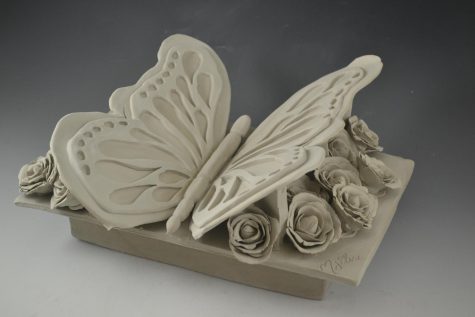

Colette is a Senior who joined Journalism because they wanted to expand upon their writing and to learn a new skill in an unfamiliar field. Their...
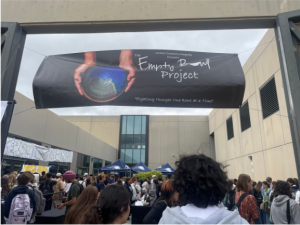











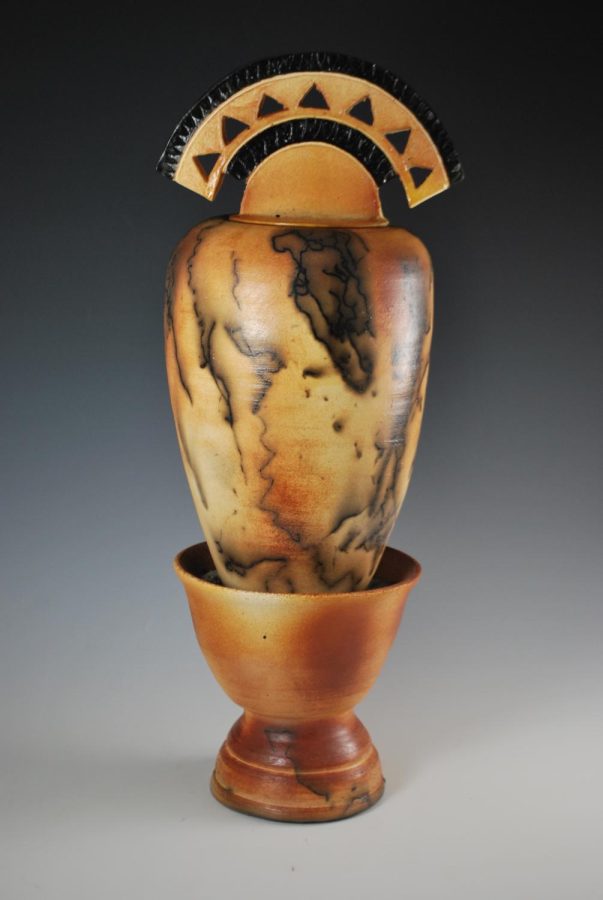
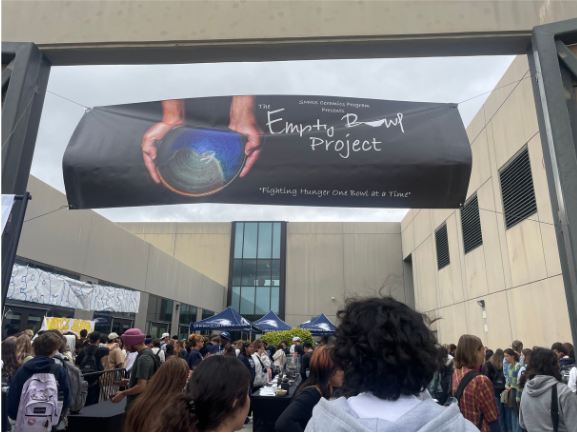
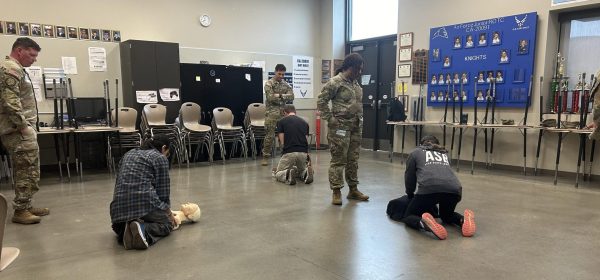


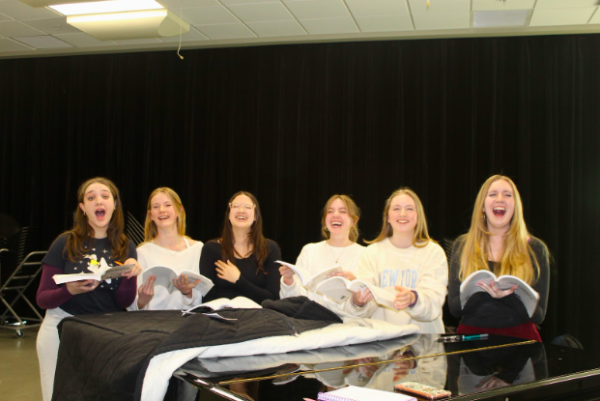

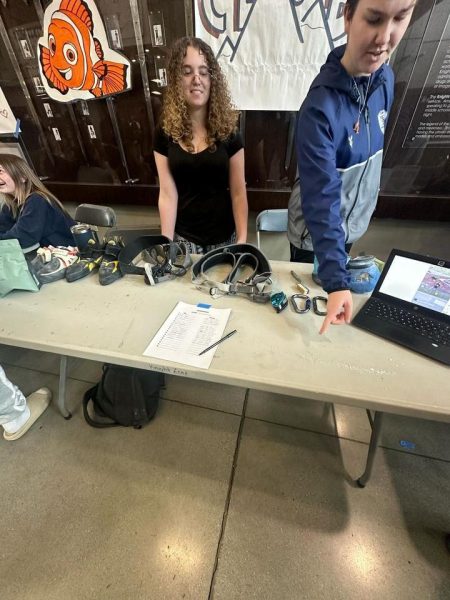



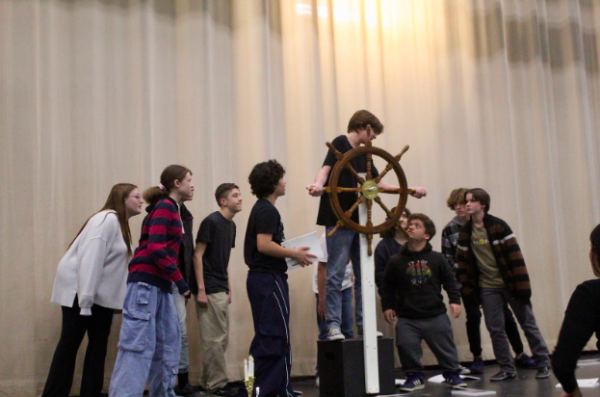



Carly Diago • Dec 13, 2021 at 9:07 am
I think you really embodied the creative process through this piece. Amazing job, Colette!
Mrs Donohue • Dec 3, 2021 at 1:51 pm
This is an excellently written article and a lovely tribute to both Mr Stout and the creative process. Nicely done, Colette!
Katherine K • Dec 1, 2021 at 8:08 pm
Beautifully written, Colette!! Makes me wanna join ceramics now hehe